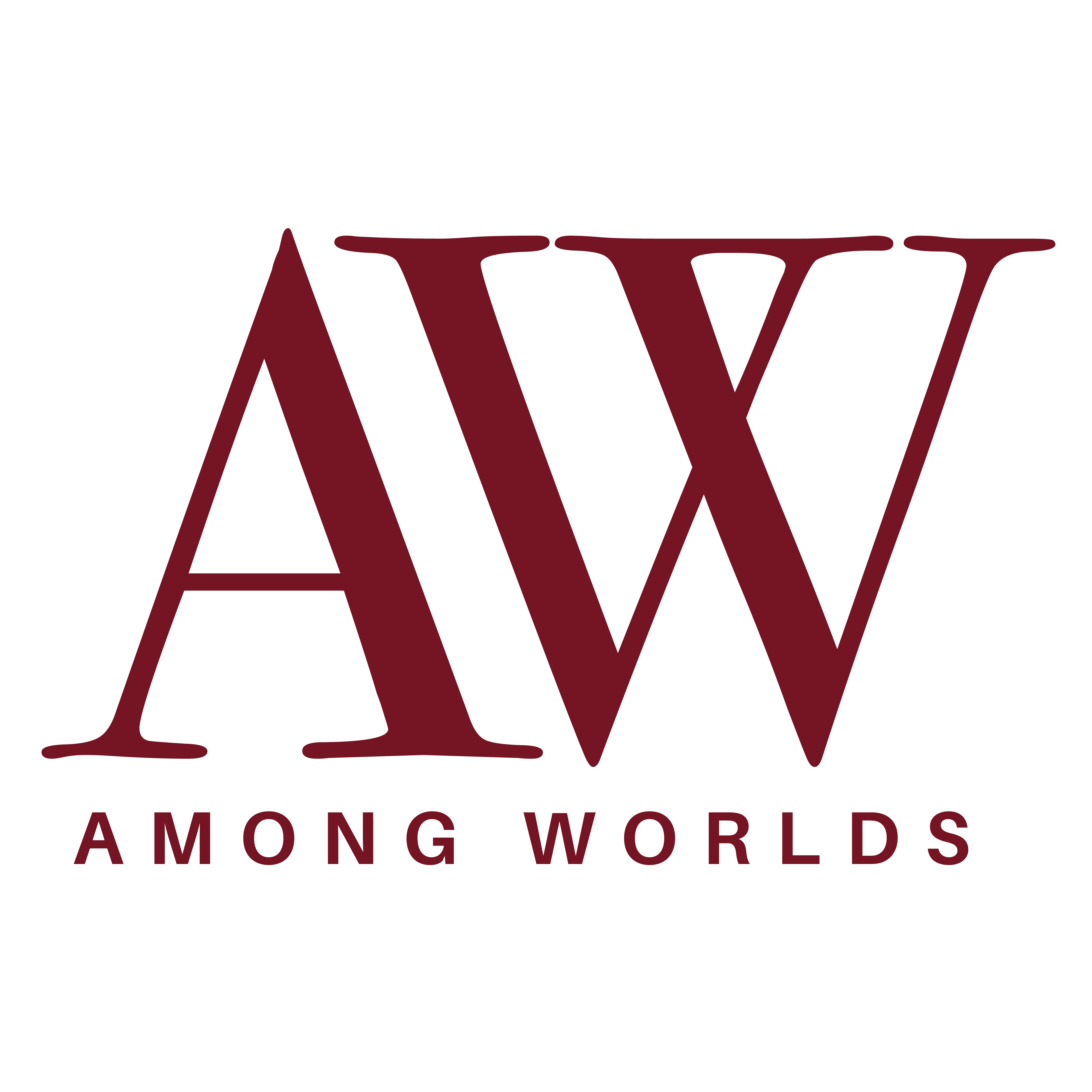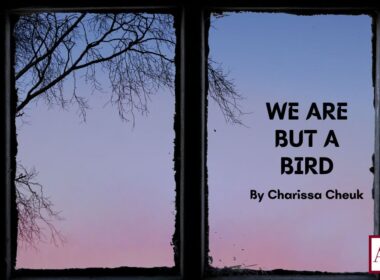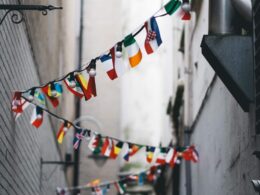by Tanya Crossman
There are lots of ways to have a cross-cultural childhood—to grow up deeply impacted by more than one cultural construct: more than one worldview, more than one way of doing life, more than one set of values by which to make decisions and judge the actions of others. Yes, the different food and language and other external things are great, and often we have deep emotional attachments to them, but the subconscious ways of thinking we learn alongside them are what really change our lives.
Something I recognised quite early on in my work with third culture kids, before I was even aware of Ruth Van Reken’s CCK model and cross-cultural umbrella analogy, was that some TCKs have additional layers of cross-cultural experience and identity, more so than others. As with any element of culture, it was something that seemed obvious on the surface, but as I explored, I began to realise just how deep the impact of those overlaps went.
In the meantime, I began reading and learning more about race, privilege, discrimination against minorities, and disability—and came across the concept of intersectionality. Very quickly I knew this was the concept I had been looking for to describe what I was seeing in the TCK community. Intersectionality is generally used to describe the impact of belonging to overlapping categories of discrimination or disadvantage. For example, being of both a disadvantaged socio-economic group and a race that is discriminated against means standing in the intersection of those two disadvantages, and therefore experiencing a greater impact than either of those groups would alone.
I began to use the phrase cross-cultural intersectionality to describe the impact of standing in the overlap of multiple cross-cultural childhood experiences. I know plenty of people who belong to four or five of the categories in Ruth’s CCK model! In my book, Misunderstood: The Impact of Growing Up Overseas in the 21st Century, I highlighted several simple overlaps. I interviewed individuals who lived in these intersections, and with their permission, shared some of their stories.
For example, a person can be both a third culture kid (TCK) and also an immigrant kid—a child of immigrant parents, or a child who immigrated to a new country before subsequently moving again as a citizen of that country. To call that person just an immigrant kid is to erase key pieces of their particular cross-cultural experience. To call them just a TCK also erases key pieces of their cross-cultural experience. They are more than either of those labels—they are a cross-cultural kid, who stands in the intersection of two identities.
Without an understanding of the intersectionality that exists in the overlapping lives of cross-cultural kids, we risk oversimplifying their experiences. This is part of why it is vital to go beyond the third culture kid conversation and talk about different types of cross-cultural experiences. Even among TCKs these additional cross-cultural experiences occur and have deep, intersectional impacts.
TCK + Immigrant/Migrant/Refugee
In Misunderstood, I coined the term Immigrant Expat to refer to families who experienced both immigration and subsequent expatriation. These families are connected to the parents’ original culture, the naturalised passport country, and the culture(s) they live in as expatriates. In Misunderstood, I chose Korean American expats in China as a specific example of this type of intersectional cross-cultural experience, but I have talked with Immigrant Expat TCKs from a variety of backgrounds.
Intersectionality changes the experience.
Here is Eugene, 21, narrating a bit of his experience for my book:
My parents were born and raised in Korea and moved to the States after high school. They took what they thought were the best parenting methods from both their backgrounds (Korean and American), and employed them hand-in-hand. My siblings and I were raised to respect our elders, but to not be afraid to question their decisions where we saw fit. We celebrated both American Thanksgiving and traditional Korean New Year. We visited relatives both in Korea and in the States. And all this happened as we grew up in China.
I also looked at what I called Returned Immigrant Expats—families who returned to the parents’ original country, but now with foreign citizenship. The group I used as my example for this section were Chinese immigrants who had returned to live in China (from various passport countries), though I also spoke to TCKs who had this particular experience in other countries. In the book, I explain:
These families have an interesting dynamic. The parents may feel China is home, but they no longer completely belong as both they and the nation of China have changed. Their children, on the other hand, usually feel completely foreign. The difference in their experiences can create conflict.
In many cases, both types of Immigrant Expat TCKs found they had a stronger connection to the language and culture of their parents’ original country than cousins who were immigrants but not also expatriates. Living in international communities meant Immigrant Expat TCKs felt more at ease expressing a multi-faceted cross-cultural identity, and less pressure (or desire) to assimilate into the majority cultures of their passport countries. Instead, these CCKs often feel quite comfortable identifying with and expressing elements of all the cultures to which they feel connected.
This doesn’t mean the process of identity formation is smooth sailing for them—I don’t think it is for most CCKs! But the pressures they face are different from the groups they stand in the intersection of. Intersectionality changes the experience.
TCK + Mixed Cultural/Ethnic Heritage
I talked to a lot of TCKs who had parents from different cultures and/or different ethnicities while writing Misunderstood, and I’ve talked to many more since. About one in four of the 1,904 TCKs surveyed for TCK Training’s survey of developmental trauma in TCKs indicated mixed ethnic/cultural heritage. Multicultural and multi-ethnic families are two different experiences, although related ones. Often if a family is one it is also the other, but not necessarily.
Some TCKs appreciate their ‘ethnic ambiguity,’ using it as a way to blend in as a local.
One TCK I interviewed, for example, had parents from Finland and the US—very different cultures—but both parents were Caucasian. I also interviewed TCKs who had parents from different ethnicities but the same passport country. (Usually this meant there was a minority culture involved as well.) These intersectional CCKs do not have the experience of visibility—they do not wear their mixed cultural heritage on their skin. I have heard many stories of hurt feelings over mixed heritage that were overlooked, downplayed, or even ignored by others.
On the other hand, others appreciated the lack of visibility, and the choice of how to present. Yet there may be other markers that make them stand out, such as their name. A surname that is clearly “not from around here” may mark out a person who ethnically belongs, even if their name doesn’t. On the other hand, a child of mixed ethnic heritage may find they look “different” no matter where they are—that they are obviously, visibly “other” no matter where they are. As I wrote in Misunderstood:
Biracial TCKs in particular spoke of feeling their outward appearance did not match how they felt inside. While this is a feeling many TCKs express, biracial TCKs carry their difference on the outside. One biracial TCK (with an African father and Asian mother) told me she felt she had to ‘prove’ herself to both sides of the family, that she stands out in every family gathering, no matter which side of the family she is with. There is an upside, however. Another biracial TCK told me he has come to like this ‘different’ appearance because it reflects the cross-cultural life he has lived as a TCK.
Several TCKs I have spoken to appreciate their “ethnic ambiguity,” using it as a way to blend in as a local in different contexts or to give a reason for their difference that others will readily accept.
There are clearly additional complications of identity for this group of intersectional CCKs—but they have one big benefit other TCKs lack. Even when these TCKs did not have citizenship in more than one country, most had a sense of ownership in another country or culture. Their cross-cultural identity is generally more readily accepted by others than a TCK whose cultural and ethnic heritage is centred in their passport country—even if they still get asked which country they like better!
TCK + Cross-Cultural Adoption
As I interviewed TCKs who were cross-culturally adopted for Misunderstood, some common questions and reactions became apparent. This was particularly true for those who lived as expatriates, or foreign passport holders, in their birth countries. Many wondered about people around them—the people they were genetically and historically connected to. There were common experiences of looking local, while being next to parents who did NOT look local. I also wrote about three common reactions these TCKs had to their situation, while also noting that some TCKs experience a mixture of all three at different times:
1) Avoiding or refusing to identify with their birth culture. This may involve refusing to learn or speak the language, lying about their heritage or history, or exhibiting extreme patriotic or nationalistic sentiment about their passport country or culture.
2) The opposite: wholly identifying with their birth culture and distancing themselves from their passport country or culture. Again, this may include language, lying, and strong cultural preferences, this time in favour of the birth culture and against the passport culture.
3) Getting stuck in endless questions of identity and belonging. For these CCKs, there is a deep insecurity related to their sense of identity and identification with the various cultures to which they are connected. They may fear being made to choose or feel anxious about where they belong.
As I noted in my book:
These reactions are ways in which adopted TCKs process their situation and the conflicting emotions they may experience. As they work through these issues, they can come to integrate the different aspects of their cultural identity—allowing for celebration in place of conflict.
Again, these CCKs share a lot in common with both TCKs and cross-culturally adopted individuals who only ever live in their passport countries. But the intersection of those identities creates an entirely new set of experiences.
Support for Intersectional CCKs
TCKs with experiences of cross-cultural intersectionality have different needs to TCKs without any intersecting cross-cultural childhood experiences. They have additional questions and concerns. Untangling their individual identities and forming a sense of self from their intersecting cultural inputs is more complicated. There’s nothing wrong with that, and there’s no reason for them to be any less healthy, successful, or happy in life—but denying this truth does not help.
Validating cross-cultural intersectionality is healthy. Supporting intersectional CCKs as they process personal identity and values is helpful. Coming to a place where you know and love all the pieces that make you who you are is the goal—for all of us—and even if that journey is a little longer for some, it is still worth every step.

Tanya Crossman is an Australian Adult TCK who has lived in Australia, the US, China, and Cambodia. She is the Director of Research and Education Services at TCK Training, and author of Misunderstood: The Impact of Growing Up Overseas in the 21st Century. (tanyacrossman.com, Twitter: @tanyatck; FB & Instagram: @misunderstoodtck on FB and Instagram)












